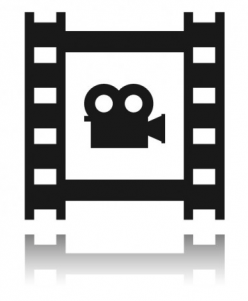Doing this academic research has been illuminating! A lot of hard work in an already busy period which increased my stress level but a fascinating journey nevertheless that taught me a lot on many aspects of my lecture and my practice. I had never done academic research before and I had never had deep, meaningful and constructive feedback from students on my lectures either. So, this SIP has clearly taken me outside of my comfort zone but it has also giving me an opportunity to study my own work and to find improvements on both my lecture and my own practice.
Inspired by these finding I have also reflected on my practice and on how I could make my own work more inclusive and effective. For example, I have realised the importance of graphics to ease the learning process for all. I have tested different pedagogies, realised their potential and I will reuse them. I have learnt not to pack jam my lecture of too much information that I will not have the time to go through and I have learnt to time better my lectures. My understanding of the importance of peer to peer communication has been enhanced and I will prioritise a safe space in my lectures for these conversations. My critical thinking and analysis have gained in sophistication and my overall understanding of teaching and the learning process have increased exponentially.
There is also an interesting aspect that has emerged from the research of the lecture: it is the different teacher/ students’ relationship I observed. Indeed, both at the beginning of the lecture and of the focus group, I purposely blurred the relationship by letting them know that as biases were all around us they had already a good knowledge of some of the topics and that I would learn from them and from their feedback. During the focus group, I highlighted that there was no teacher or students in the session but a group of people who were brainstorming. It seems that breaking the mould of the normal teacher/students’ relationship had a liberating effect on how the students interacted with me. They seemed to have been more relaxed, more open to talk about their feelings and experiences and more critical as I wasn’t perceived as the person that had all the knowledge. I do realise that a research would be necessary to confirm this intuition but my instincts were very strong specifically during the focus group and I do believe that there is a truth to this even though I can’t prove it for now.
Finally, I would like to address a comment that was made in the Padlet feedback page and that I haven’t addressed yet as I felt it was too specific to be included in the research. Indeed, one of the students mentioned that in China the gender bias is the reverse than in Europe and 70% of the TV crew are female. I was surprised by this comment because it went against everything I know about Chinese TV & Film crew. Indeed, the main activity of my company Beaucoup Films, is to provide film services to foreign production companies who wish to film in the UK and in Europe. My main clients are Chinese and Indian. I have 20 years of experience filming with Chinese crew and I have never witnessed a 70% female crew, ever. I also know for having researched it that the gender gap in labour force participation and pay has widened in China in the last 10 years[1]. At first, I thought that this comment could be the result of male fragility but decided to investigate to make sure. After the focus group was finished, I related the comment to the group and ask them what they thought. A Chinese female student replied that the imbalance wasn’t so much in the number of female and male crew but in the role that they had. She went on to explain that directors and all the camera department crew would be male with very rare exceptions and the production department would be mainly female crew which is exactly what I have experienced. In all these years working with Chinese crew, I’ve worked with only 2 female directors and never saw a woman in the camera crew. What was interesting is that the male student wanted to be a producer and the female student wanted to be a director. So I took this opportunity to demonstrate how damaging gender gap was for all of us and how it could crush talent and ambitions. I also thought that I would include this comment in my next lecture to emphasise the impact of gender gap on people’s career.
In conclusion, doing the self-initiated project and going through PG Cert has been a challenging yet rewarding experience. It has allowed me to understand better my practice, different pedagogies and the learning process. I now feel much more confident in my teaching and in my understanding of High Education. I’m looking forward to carrying on implementing these new skills and knowledge in my lectures and I am grateful to all teachers and peers that have made this experience very special indeed!
[1] Zang, E. and Huang, T. (2020) Gender Discrimination at Work Is Dragging China’s Growth. Peterson Institute for International Economics. Available at: https://www.piie.com/blogs/china-economic-watch/gender-discrimination-work-dragging-chinas-growth. (Accessed on 6th January 2022)
